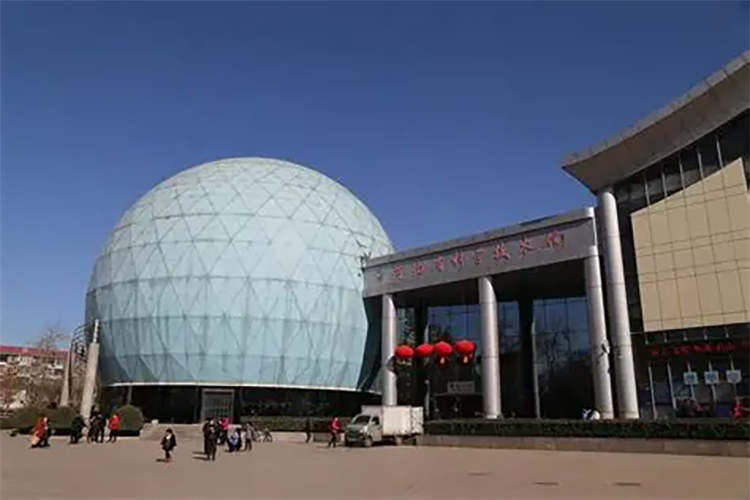Hebei Science and Technology Museum: A China Science Center Family Adventure
Introduction
In central Shijiazhuang a sleek, silver building looks like a futuristic spaceship touching down on an urban oasis — this is the Hebei Science and Technology Museum, famous for hands-on exploration. Unlike silent display halls, this interactive center buzzes with children’s laughter: touch simulated lightning, pilot a virtual spacecraft to Mars, or control light with your body. With more than 300 immersive exhibits, this North China leader turns complex science into playful discovery so families can learn together through experience.
1. Bringing Science to Life: Interactive Labs
The Hebei Science and Technology Museum is one of North China’s rare fully interactive science museums, founded on the idea that experience equals learning. It breaks the usual “do not touch” museum rules. From preschoolers to teens, every visitor can find a science game tailored to their age — this learn-through-play approach makes the museum Shijiazhuang’s top family weekend destination.
2. Architecture and Status: A Sci‑Fi City Landmark
– Design language: The exterior resembles a dynamic molecular structure, with silver metal and glass facades that reflect a high-tech aesthetic; at night the lighting transforms the building into a giant light-and-shadow installation.
– Industry benchmark: As a national first-level science education base, about 80% of the exhibits are independently developed in-house. Its immersive spaceflight simulator is among the most advanced in Chinese science centers.

3. Signature Must-See Attractions
Lightning Storm Theater (Physics Hall)
Stand safely inside a special glass booth while artificial lightning — generated by Tesla coil technology — arcs around you. The dramatic show runs three times daily with English commentary and reveals the wonders of electromagnetism.
Mars Mission Simulator (Space Hall)
Put on a sensor vest and take the joystick through a full Mars-landing sequence: coping with dust storms, collecting rock samples, and completing mission tasks. The NASA-style simulation makes children feel like real astronauts.
Human Symphony (Biology Hall)
Infrared sensors turn your heartbeat into musical melodies, and 3D projections of intestinal movement “perform” alongside food models. Science becomes art as visitors visually and audibly explore bodily functions.
4. Exhibit Highlights and Learning Outcomes
Permanent exhibits are grouped into six themes:
– Physics Fun (hands-on experiments with levers, light waves, and basic principles)
– Life Codes (from DNA models to a virtual surgical table)
– Space Exploration (including a 1:10 Long March rocket model and VR spacewalks)
– AI Future (play chess with robots and test autonomous driving simulations)
Special summer exhibitions often include a ticketed robot-dinosaur show featuring blinking, roaring mechanical T-Rexes — a seasonal crowd-pleaser.
5. Atmosphere and Audience: A Family Science Playground
On weekdays the museum hosts many school groups; weekends are busiest with families. Despite crowds, average wait times for exhibits are usually under 10 minutes. Background music is upbeat, display heights are child-friendly, and there’s even a toddler science corner for ages 3–6.

6. Efficient Visit Plans
– Parent-child half-day essentials (about 2.5 hours): 1st floor Physics Hall (30 minutes) → 2nd floor Spaceflight Simulator (must-try; 15 minutes per person) → 3rd floor Biology Hall’s Human Symphony → 4D theater (shows on the hour).
– Full-day deep dive: add special exhibitions, weekend-only stargazing at the observatory, and the B1 science workshop DIY sessions.
– Combo suggestion: Walk five minutes to the nearby Hebei Provincial Museum to combine “ancient civilization to future technology” in one day.
7. Foreign Visitor Practical Guide
– Language support: Exhibit instructions include English; the service desk rents English audio guides (deposit RMB 200).
– Ticketing tips: Buy tickets on the official website (English interface available) or scan on-site QR codes; Visa and Mastercard are accepted. Foreign passport holders must exchange online tickets for an on-site ticket — allow an extra 10 minutes.
– Insider tips: Tuesday afternoons are least crowded. For thrill-seekers, the back row of the 4D theater offers the most motion.
8. Practical Information
– Address: No. 1 East Street, Chang’an District, Shijiazhuang (opposite the Provincial Museum)
– Opening hours: Tuesday to Sunday, 9:00–16:30 (closed Mondays except public holidays)
– Admission: Permanent exhibition RMB 30; 4D + special exhibition combo RMB 60; children under 1.2 meters free.
– Transport: Metro Line 1 to “Museum” Station Exit D, or buses 1/5/10 to “Science Museum” stop.
Conclusion
When a child screams with delight at a tornado you start, or a teen lights up during a coding competition, Hebei Science and Technology Museum proves science is far from dry. Whether you want to ignite a child’s imagination or rediscover your own curiosity, there’s an exhibit here that will make you say, “Science is so cool!” Add this futuristic family-friendly stop to your Shijiazhuang itinerary.


